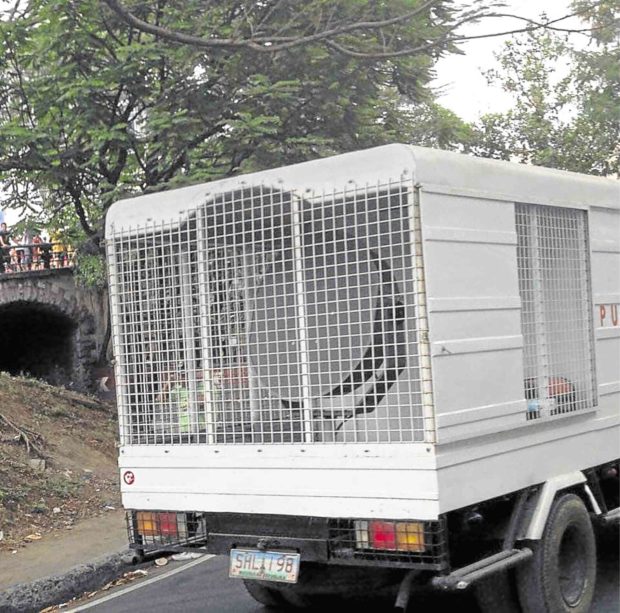PNP’s ‘sonic attack’ jeered, justified

Militant groups are back at Mendiola in Manila for another rally against visiting US President Donald Trump on Tuesday, a day after the police used a long range acoustic device (left) against another protest action timed with the Asean summit. —MARIANNE BERMUDEZ
Its piercing sound is meant to silence protesters — or at least leave them disoriented and easier for antiriot forces to contain.
But even for militant groups who no are no stranger to being hosed down or beaten with truncheons, the use of a “sonic weapon” against them is an act of escalation on the part of the Philippine National Police (PNP).
At least three lawmakers on Tuesday called for a House inquiry into the PNP’s use of a long-range acoustic device (LRAD) against the protesters who staged a rally in Manila on Monday in time for the Association of Southeast Asian Nations (Asean) summit.
Gabriela Women’s Party representatives Arlene Brosas and Emmi de Jesus said the use of an LRAD showed an “intent to harm” protesters who were stopped by the police on Taft Avenue, 3 kilometers away from the Philippine International Convention Center, the summit venue.
Health concerns
Article continues after this advertisementBrosas raised health concerns that the device could pose on its targets, such as hearing trauma, permanent hearing loss and lingering headaches.
Article continues after this advertisement“The latest antipeople weapon of the (PNP) must be probed and opposed. They cannot just play with it every time there’s a mobilization to cover up the rage of the people,” Brosas said, adding that the PNP should disclose how much was spent on the equipment.
“Its effect on the hearing and the health of protesters and even the police is no joke,” she added.
Bayan Muna Party-list Rep. Carlos Isagani Zarate denounced LRAD’s use as “inhumane” due to its “long-lasting damage” on the protesters’ health.
“Based on a study, more than one second of exposure to a 121 decibel noise could cause ringing in the ears, headaches and even vertigo. But the LRAD is said to generate 137-140 decibels and it was used for several minutes during the rally,” Zarate said.
A hefty piece of equipment usually mounted on a vehicle, an LRAD blares out a loud, piercing sound resembling a car alarm, with an intensity of 143 to 153 decibels, and a range of 1.5 to 3 km.
Nonlethal
Sought for comment, National Capital Region Police Office (NCRPO) chief Director Oscar Albayalde confirmed the use of an LRAD on protesters on Monday, but maintained that the device is nonlethal and only causes temporary discomfort.
The PNP’s use of an LRAD was not even new, according to Albayalde, who recalled that it was also deployed during the Arroyo and Aquino administrations, mainly during big rallies like those timed with the State of the Nation Address.
Using it again on Monday “was the call of the commander on the ground (Senior Supt. Lemuel Obon) and we respect his call,” the NCRPO chief explained. “It was needed during that time. Most likely (his men) were beleaguered and feared that the protesters might be able to get through (their line).”
He pointed out that 28 policemen were hurt when the rally turned violent. —With reports from Dexter Cabalza and Aie Balagtas See
